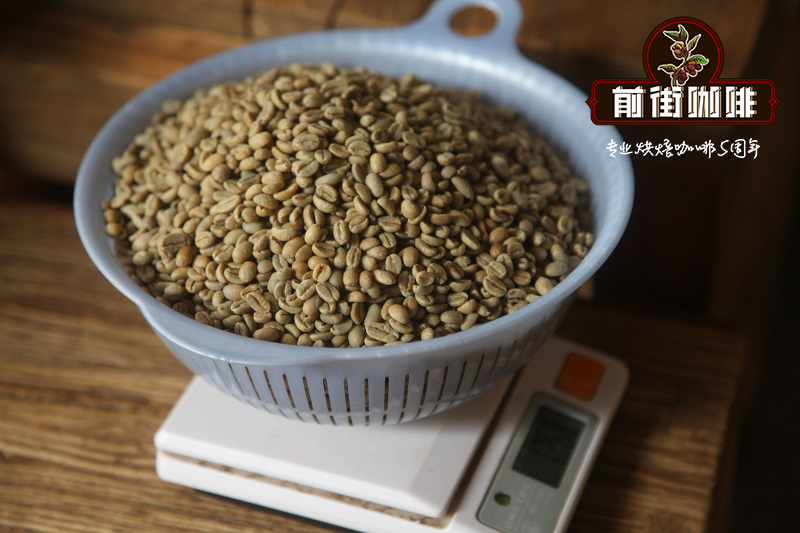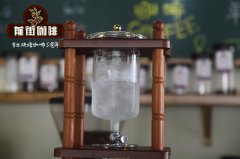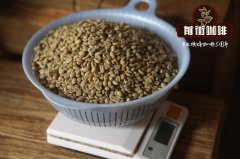What are the growing conditions of Agrotakesi SA Coffee Manor in Bolivia? Bolivian coffee style

Professional coffee knowledge exchange more coffee bean information please follow the coffee workshop (Wechat official account cafe_style)
What are the growing conditions of Agrotakesi SA Coffee Manor in Bolivia? The flavor and taste of Bolivian coffee?
Agrotakesi SA Manor, which ranges from 1900 meters to 2400 meters above sea level, is one of the largest coffee growers in the world. Mount Mururata, part of the Royal Andes, is one of the few Inca trails leading to the Takesi Valley. The Takesi River, which is rich and pollution-free from the melting of the Royal Mountains, is used in all agricultural tasks, especially in the process of post-harvest coffee. During peak hours, the presence of clouds stabilizes heat and solar radiation, thus affecting better photosynthesis.
Organic land with good deep drainage is volcanic in nature, retaining the overall diversity of major biodiversity and transforming it into better biological natural control. These natural conditions prolonged the development of the fruit from flowering to harvest, and reached the fruit with better aroma and taste quality in 11 months. 100km from La Paz, in the Sud Yungas area, we arrive at Takesi Manor, which is located between 1900? 3000 meters above sea level, a total of 2500 (2500) hectares, six hundred (600) hectares, will be used for different agricultural products, coffee, apples, orchids and flowers, and the remaining 1900 (1900) hectares will be reserved as natural virgin forests. maintain the special climate and adequate conditions of the farm. A unique ecosystem, at higher elevations, special conditions for coffee cultivation, detailed study of soil, water and climate determine an area of at least 600 hectares, with the best water and ecological characteristics, the soil is formed above the surface of the volcano, which contains a cover of organic material, in some places up to 2 meters deep. At present, the estate has 13 hectares of Typica coffee and produces an average of 120 bags of 70kg green coffee per bag.
The annual rainfall of the farm is 1800-2500 mm / year, the relative humidity is 70%, and the average temperature is 15 °C (59 °F). At present, the estate has 13 hectares of Typica coffee and produces an average of 120 bags of 70kg green coffee per bag. The Cafe Takesi Cafe has begun to grow 20 hectares of land and will plant 20 hectares of land each year for four consecutive years. The annual rainfall of the farm is 1800-2500 mm / year, the relative humidity is 70%, and the average temperature is 15 °C (59 °F). At present, the estate has 13 hectares of Typica coffee and produces an average of 120 bags of 70kg green coffee per bag. The annual rainfall of the farm is 1800-2500 mm / year, the relative humidity is 70%, and the average temperature is 15 °C (59 °F).
Bolivia is the fifth largest country in South America, with diverse topography and small species, which is highly suitable for growing coffee. Most of the coffee grown in Bolivia is Arabica coffee, which is mainly made up of family heirlooms such as Typica and Caturra and is organically grown. Bolivia has a long history of coffee production, although little is known about the introduction of the country, or commercial coffee production is earlier than around 1880. There are still commercial farms and estates in Bolivia, although most large estates have been requisitioned as part of them. The government reformed the land and redistributed it to smaller rural families. Since the implementation of this legislation in 1991, 80 per cent of the country's coffee production is now produced by small farmers, accounting for an average of 1.2 to 8 hectares of land.
Flavor: Jasmine, violet, honeysuckle, spices, pineapple, melon, orange, black tea, cherry, rose, almond, peach, red wine, passion fruit
Light acidity, citric acid, tartaric acid, intense, flowers
Texture: semi-sweet chocolate, vanilla, balance, jam, integrity, cloves, persistence, consistency
Qianjie cuisine is recommended:
Filter cup: Hario V60
Water temperature: 88 degrees
Degree of grinding: small Fuji degree of grinding 4
Cooking methods: the ratio of water to powder is 1:15, 15g powder, the first injection of 25g water, 25 s steaming, the second injection to 120g water cut off, waiting for the powder bed water to half and then water injection, slow water injection until 225g water, extraction time about 2:00
Analysis: using three-stage brewing to clarify the flavor of the front, middle and back of the coffee. Because V60 has many ribs and the drainage speed is fast, it can prolong the extraction time when the water is cut off.
Important Notice :
前街咖啡 FrontStreet Coffee has moved to new addredd:
FrontStreet Coffee Address: 315,Donghua East Road,GuangZhou
Tel:020 38364473
- Prev

What are the characteristics of Brazilian coffee? Growing kaduipin in FAZENDAS KLEM Coffee Manor, Brazil
Professional coffee knowledge exchange more coffee bean information please follow the coffee workshop (Wechat official account cafe_style) what are the characteristics of Brazilian coffee? What is the history of growing kaduai varieties at FAZENDAS KLEM Coffee Manor in Brazil? Fazendas Klem is the leader of the Matas de Minas project and a model of organic production in the region. After organic processing, soil protection
- Next

What is the flavor of the tin card variety in Sinapork Cooperative, Bolivia? How do we cook Bolivie?
Professional coffee knowledge exchange more coffee bean information please follow the coffee workshop (Wechat official account cafe_style) Bolivia Sinapok cooperative-how is the flavor of the tin card variety? How do we make Bolivian coffee? Production area: Caranavi producer: Sinapok treatment: washing treatment varieties: Typica altitude: 1400 to 1700 m mining
Related
- Detailed explanation of Jadeite planting Land in Panamanian Jadeite Manor introduction to the grading system of Jadeite competitive bidding, Red bid, Green bid and Rose Summer
- Story of Coffee planting in Brenka region of Costa Rica Stonehenge Manor anaerobic heavy honey treatment of flavor mouth
- What's on the barrel of Blue Mountain Coffee beans?
- Can American coffee also pull flowers? How to use hot American style to pull out a good-looking pattern?
- Can you make a cold extract with coffee beans? What is the right proportion for cold-extracted coffee formula?
- Indonesian PWN Gold Mandrine Coffee Origin Features Flavor How to Chong? Mandolin coffee is American.
- A brief introduction to the flavor characteristics of Brazilian yellow bourbon coffee beans
- What is the effect of different water quality on the flavor of cold-extracted coffee? What kind of water is best for brewing coffee?
- Why do you think of Rose Summer whenever you mention Panamanian coffee?
- Introduction to the characteristics of authentic blue mountain coffee bean producing areas? What is the CIB Coffee Authority in Jamaica?

